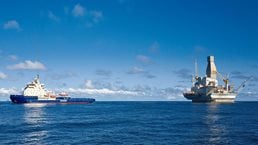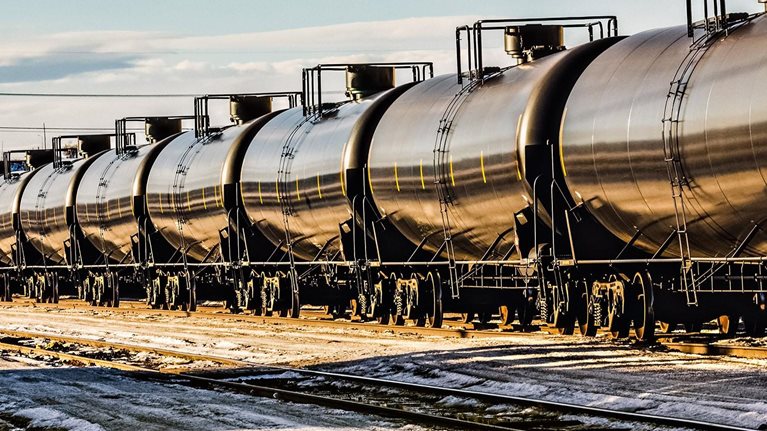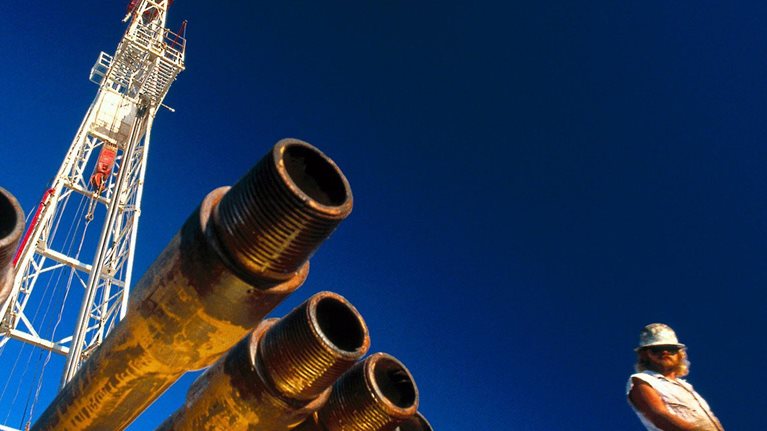Quarterly perspective on oil field services and equipment: March 2016
Oil Field Services & Equipment (OFSE) sector revenues continued their downward path in the fourth quarter 2015. And with operators adjusting to the new lower price outlook and aiming to be profitable at $50/barrel oil, OFSE margins are now also coming under pressure—having so far remained fairly steady, to the surprise of many operators. The situation is putting even the biggest companies under pressure, with Schlumberger reporting its first quarterly loss in 12 years of trading.
Revenue contraction continues to cause the most damage, falling by 32.6 percent versus Q4 2014—an acceleration on the third quarter annual comparison, which showed a 27.9 percent drop. Declines in all the main sectors accelerated, with companies in the services category falling 44.3 percent on the year, compared to a 38.1 percent in the third quarter. Assets were down 30.3 percent, and equipment 37.7 percent. Quarter on quarter comparison showed an overall revenue decline of 7.0 percent in the fourth quarter, up from 5.3 percent in the third. These revenue falls correlate closely with capex cuts.
The declining crude price over the last few months is a continued source of concern, which we expect will lead to further capex cuts this year, especially in the North American onshore market. Brent dropped from $44.6/barrel in November to $33.5/barrel in February—although it should be noted that at the time of writing the oil price had risen from $25/barrel to $36/barrel in two weeks. Forward prices have also come down further, indicating a lower for longer scenario may well be in the offing, leaving many companies bracing themselves for a prolonged downturn. The first casualties are now coming in, with the UK North Sea’s First Oil Expro going into administration in mid-February and rumors of growing insolvency across US LTO. “2016 E&P investment levels will fall for a second successive year and any significant recovery in our activity levels will be a 2017 event,” said Paal Kibsgaard, Schlumberger CEO, in his Q4 earnings statement.
The situation is now threatening OFSE margins, which have held up remarkably well over the past four quarters. In particular, assets, which had seen a remarkable rise in margins in the first half of 2015, fell by 2.3 percent—although this is still a 4.3 percent premium to Q4 2014. Services and equipment margins have fared less well, standing at 7.1 percent and 7.3 percent below Q4 2014. As easy cost reduction measures are exhausted we expect margins to come under further pressure in 2016.
Key trends
Oil prices declined in recent weeks, and forward curves also shallowed (Exhibit 1)

Oil prices are maintaining their downward path, with Brent dropping from $44.6/barrel in November to $33.5/barrel in February—although it should be noted that at the time of writing the oil price had risen from $25/barrel to $36/barrel in two weeks. But perhaps the biggest price impact has come from falls further forward. Although forward prices still remain firmly above prompt, the flattening of the forward curve seen in the third quarter 2015 accelerated in the fourth, reflecting weaker sentiment over a longer timeframe. While front month Brent lost just over $10/barrel, 2020 prices dropped to $49.0/barrel from $62.3/barrel—almost $14/barrel.
The forward price falls appear to be the market pricing in the longer term implications of the resistance of US shale output to lower prices, which means that any move above $50–60/barrel would be likely to result in rising output once more. US onshore supply has declined only slowly since May last year, although the latest figures show some acceleration.
Another reason for the longer term falls could be growing signs of a fundamental rift in OPEC between Saudi Arabia/GCC and Iran/Iraq, with the latest ceiling agreement of 31.5 million barrels/day not including the two Shia-majority states, which appear set on increasing their market share. Little more is expected from the recent agreement between Russia, Saudi Arabia, Qatar, and Venezuela, although it provided the first sign of cooperation outside OPEC since the price falls began.
On the demand side, the US market is expanding, with 2015 road mileage 4 percent above its peak in 2007, although gasoline consumption remains lower due to improved fuel economy. Parts of Europe even saw a return to transportation demand growth in 2015, after many years of decline. But continued weakness in emerging markets—notably China and Brazil—is maintaining concern about medium-term demand development. And the removal of subsidies in some oil dependent economies has seen a contraction in their driving demand, while others, including China, have not passed on all the falls or have used the crude price drop as an opportunity to add taxes.
Capital expenditure—stabilizing trend from Q2 continues (Exhibit 2)

While capex is significantly lower in Q4 2015 than 2014, it has remained relatively steady since the second quarter 2015 at just over $60 billion per quarter. However, we anticipate further falls in capex of 15–20 percent this year as operators take on board the latest price falls, particularly in US onshore where we expect a fall of up to 50 percent.
While majors are better financed than independents, they are still expected to cut another 15–20 percent from capex in 2016 by postponing projects. NOCs are expected to cut the least at just 8 percent, and that’s not including the higher spending GCC NOCs, although there is still a push back on prices, which is also being reflected in lower OFSE revenue.
Rig counts (Exhibit 3)

Rig counts have accelerated their downward trend after moderate falls in the third quarter and a slight hiatus in the second. Lower prices mean further falls are expected in Q1 2016. Without a price recovery, Baker Hughes said it expects the global rig count to fall by another 30 percent in 2016, on top of the 46 percent it registered last year.
Offshore the number of rigs dropped 26 percent in 2015, with the relatively high cost mature Western Europe region—especially the UK North Sea—most affected, while the lower cost Middle East has seen less of a downturn. Some industry groups in the North Sea have been appealing to operators to get costs down by trying new approaches, or run the risk of the service base moving overseas or closing as orders dry up.
North America once again dominated the fall in onshore rig numbers, which are down 14 percent in Q4 and 60 percent since Q4 2014.
Recent OFSE market performance
During Q4 2015, OFSE revenues were 32.6 percent lower than in Q4 2014, and down 7.0 percent on the third quarter 2015, driven by a continuing decline in rig activity and persistent pricing pressure, together with a broad range of activity disruptions, project delays, and cancellations. The largest declines were posted by services, which fell 44.3 percent, and equipment companies (down 37.7 percent). Falls across all sectors were bigger than the yearly falls seen in the third quarter, when services fell 38.1 percent, assets 24.3 percent, and equipment 30.3 percent.
The falls in services have been greater than other categories so far due to the shorter term nature of contracts and a greater price sensitivity, whereas FPSO, rigs, and other assets tend to be on much longer term contracts. This means we expect falls in assets and equipment categories to increase as the sector plays out over a longer cycle, while services may have already seen the biggest falls.
Sequentially, the decline of 7.0 percent was also faster than the 5.3 percent seen in the third quarter, while both falls outpaced the relatively steady capex numbers, reflecting a lag from bigger capex cuts earlier in the year, many of which were made on an annual basis and evenly spread across the year.
EBITDA margins for all categories fell compared to the third quarter, and were down 4.1 percent on average against Q4 2014, although asset margins were still higher at 4.3 percent above—having shown an unexpected countercyclical rise in the first half of 2015. This was most likely due to efficiency improvements outpacing revenue falls, although that now seems to have reversed with a quarterly fall of 2.3 percent. OFSE efficiency gains can only go so far, and so revenue falls are now increasingly affecting margins, which we expect to continue.

Falls in equipment and service margins have outpaced those in the asset category, along with those of EPC firms, which saw a recovery last quarter from very low levels in Q2, but fell back again slightly in Q4. This quarter’s falls mean margins across all categories are beginning to be more reflective of market austerity.
Services: Oil field services companies saw Q4 2015 revenues decline 44.3 percent compared to Q4 2014, and 9.4 percent on Q3 2015. Margins are down by 7.1 percent on the year and 2.9 percent compared to Q3, after holding up surprisingly well earlier in the year as service companies quickly cut costs. “We were able to maintain operating margins due to a relentless focus on cost management,” said Halliburton’s CEO David Lesar in his Q3 earnings statement. But now the low hanging fruit has gone and operators are still looking for cuts.
Equipment: Equipment companies saw Q4 2015 revenues decline by 37.7 percent from Q4 2014, and sustained an 8.2 percent sequential decrease from Q3. While a backlog of orders ensured revenues in 2014, the fall off now continues to cause a steadily rising revenue decrease. EBITDA margins for Q4 2015 were 11.5 percent on average, down 2.8 percent from Q3 2015, standing 7.3 percent below the same quarter in 2014. The high fixed cost base of equipment manufacturers has prevented them from reducing their costs in proportions similar to the services companies. This indicates there will be further margin erosion as revenues continue to decline.
Assets: Q4 2015 revenue for this group fell 30.3 percent from Q4 2014, a bigger fall than the previous quarter’s 24.3 percent. Revenues declined sequentially by 6.8 percent, similar to the quarterly fall in Q3, which suggests that the downward trend may be starting to stabilize. Margins dropped 2.3 percent on a quarterly basis, but remain 4.3 percent above fourth quarter 2014. But despite this strong margin and relatively strong revenue performance compared to other categories, returns to shareholders since late 2014 from the asset category were by far the worst (Exhibit 5).

EPC: EPC companies saw Q4 2015 revenues decline 11.9 percent from Q4 2014, and 3.9 percent from Q3 2015. EBITDA margins were about 6.9 percent on average, down 0.5 percent compared to Q4 2014, and 2.1 percent lower than the third quarter, which was not far off Q4 2014 levels.
Key OFSE sector trends
1. Margins squeezed as operators get down to detail
It has taken until Q4 2015 to see a marked fall in margins because operators are only now entering a third stage of cost savings, which is proving more difficult to absorb than the initial rounds, as it focuses deeper into what drives costs in the O&G supply chain.
Most of the cuts so far have been by activity reduction (opex, capex), which OFSE companies have largely managed to absorb through cost savings, including more modular offerings with standardized components. Operators then worked with OFSE companies to cut cost, going through efficiency programs in more detail in an attempt to take more control of costs, with “design-to-value” and “should costs” flavor of the day. Now there is a third wave, particularly with equipment suppliers, where activity is being driven down so much that efficiency savings are not sufficient to cover revenue falls and support margins. How well OFSE companies are able to cope will depend on how far advanced their own efficiency programs are.

Would you like to learn more about our Oil & Gas Practice?
Some of the service companies are behind in these programs, and the US onshore, in particular, lacks sophistication. US LTO price and activity reduction are well underway, but the efficiency wave still has some way to go especially in onshore services. OEMs are always ahead of the cycle in terms of their demands.
2. Bankruptcies as cash flow fails to cover costs
In cases where cost bases cannot be cut sufficiently, the first OFSE bankruptcies have taken place. Houston-based contract rig operator Vantage Drilling filed for bankruptcy protection in early December after reaching a deal on a debt-for-equity swap with its lenders and bondholders. Hercules Offshore, a jack-up rig contractor with most of its fleet in the shallow waters of the Gulf of Mexico, went into Chapter 11 in August, but after securing a $450 million loan managed to re-emerge in November, becoming one of the first oil and gas industry players to successfully restructure in the energy downturn. More recently, Paragon Offshore filed for bankruptcy on February 14 following missed bond payments in January.
It makes sense that rig owners would be the first ones to go under because of the long investment cycle, which has left some companies with a lot of debt. Last year could be the leading edge of what may be a number of bankruptcies, as companies seek to shed or restructure debt. This may help explain why the asset category has performed so badly in shareholder returns.
A lot of rigs are still at pre-price decline day-rates, so as they come off contract it becomes more difficult for offshore rig owners to maintain cash flow. As price recovery takes place the recovery may take a little while to benefit them, while in North American onshore where activity is more fungible, we might expect to see margins recover a little more quickly.
3. Bankruptcies, M&A rebalancing market by removing capacity
With far too many rigs and other assets in the market, it will require capacity to be reduced by scrapping less competitive rigs to rebalance supply and demand. However, many of the companies in most trouble are those that invested heavily over recent years in new fleets, some of which may end up being sold cheaply to more cautious companies.
Leaders of Transocean, Noble Corporation, and Rowan Companies have all said they are looking for bargains—to both eliminate competition in a saturated rig market and to pick up new rigs at low prices. Vantage, along with Pacific Drilling, have a young fleet that would be valuable to larger rivals, particularly those with older rigs. However, at the moment no rigs are being bought, perhaps as there are no contracts to send them to. As companies with heavy equipment across the OFSE landscape (e.g. rigs, pressure pumping) restructure, it will be critical to watch how much capacity comes out of the market via scrapping or retirement.
4. Consolidation in oil service and equipment changes the face of the industry
A rash of mergers and acquisitions over the last two years and the first of a number of anticipated bankruptcies is altering the shape of the OFSE sector. The merger of Halliburton and Baker Hughes at the end of 2014 has been followed by others over recent months, notably Schlumberger’s acquisition of Cameron for $14.8 billion—in contrast to lackluster M&A activity among upstream oil and gas companies in 2015. If the trend persists, the OFSE sector will be more consolidated than their customers’.
In 2015 OFSE M&A deals were valued at $25 billion, according to Derrick Petroleum, although there were only $3 billion of deals in the final quarter of the year, as participants backed off in the face of even greater oil price falls in order to reconsider their options. While the total was down on 2014, which saw a record $71 billion change hands in 169 deals, it remains above 2013 and maintains momentum. This was in contrast to M&A among operators, which slumped to just $144 billion in 2015, the lowest since 2008, as buyers backed off. There were $35 billion of deals that were announced but cancelled in 2015—illustrating the level of uncertainty among investors. Without the $82 billion Shell-BG deal in Q2 2015, the remainder amounted to only $62 billion—significantly below even the 2008 total. Against the background of a contracting industry, the divergent trend could significantly alter the balance of market power between operators and OFSE companies once the price slump is over.


